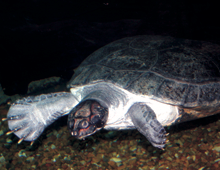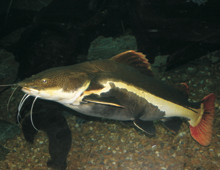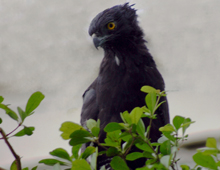
This South American turtle is famous for the mass gatherings of females that come ashore to lay their eggs, often a hundred at a time. Otherwise, these plant-eaters hardly ever leave the water. Females are much larger than males, reaching a shell length of three feet. Because their eggs and flesh have long been prized as food, they have been subject to overhunting, and are now classified as Conservation Dependent.











